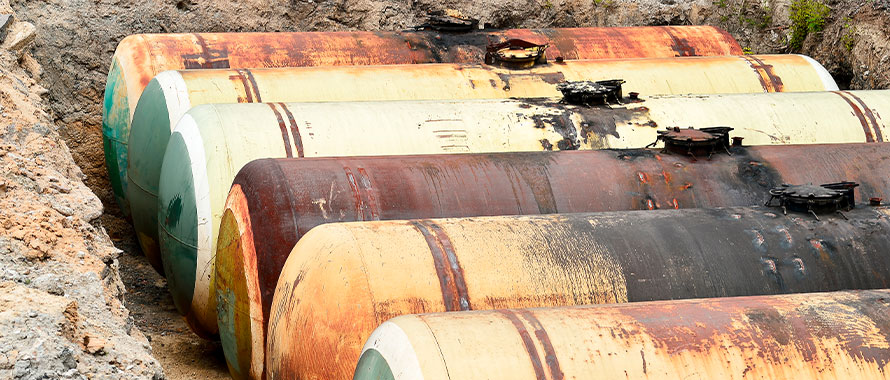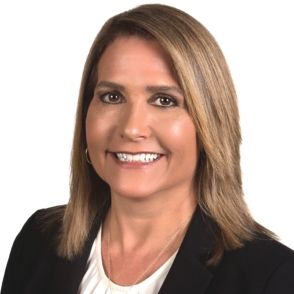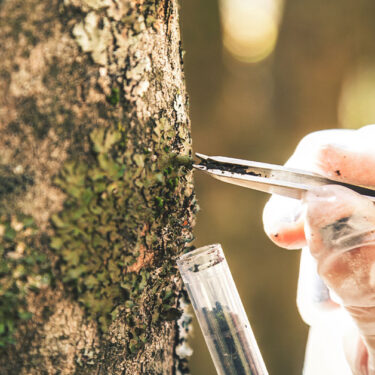There are nearly 550,000 underground storage tanks (USTs) across the nation currently storing petroleum or other hazardous substances, according to the U.S. Environment Protection Agency. Leaks, spills and contamination from such storage tanks pose a significant environmental and legal risk for the tanks’ owners and operators, which include gas stations and fuel distributors, manufacturing and industrial facilities, and agricultural operations.
Meanwhile, another 600,000 above ground storage tanks (ASTs) are currently in operation, with those numbers on the rise due to their flexibility, adaptability, lower cost, and safety benefits. To learn more about how Environmental Insurance can help companies address the risks of both USTs and ASTs, we spoke with Beth Linton, Vice President, Environmental Brokerage, Burns & Wilcox, Atlanta, Georgia.
What are the greatest environmental risks associated with USTs and ASTs today?
B.L.: Leaks that damage the surrounding environment are a serious risk for both USTs and ASTs. The greatest risk is bodily injury causing sickness – for example, if a leak from a storage tank involves carcinogens, or causes individuals to become sick due to the odor. The cleanup costs can be significant, as well, and the process can take months to years to complete. Damage to above-ground storage tanks is also becoming more common due to growing frequency and severity of weather events and natural disasters, intensifying the need for Storage Tank Pollution Liability Insurance.
Why is Storage Tank Pollution Liability Insurance increasingly being placed in the Excess & Surplus (E&S) market?
B.L.: The standard markets were the first to enter into a hard market, and so the E&S market was being flooded with submissions. As folks move from standard carriers, they have been looking to the E&S market to fill that gap. The E&S market has the ability to be flexible. For example, this market can drill down to tailor coverage for exactly what each insured needs, as well as offer manuscript endorsements. Manuscript endorsements are custom-written additions to insurance policies that address specific needs or situations not covered by standard insurance forms. They are designed for individual policyholders and can be used to modify, clarify, or expand coverage.
What are the most pressing exposures for businesses with USTs or ASTs?
B.L.: Age is the most significant exposure for USTs and ASTs. In the U.S., the average age of USTs is about 25 years, with 40% of operational USTs being more than 30 years old. An owner has to be aware that as these storage tanks become older, there is significantly more risk of a leak. As tanks age, coverage can become more difficult to get, and owners definitely need to be more diligent with leak detection systems and tank maintenance. Underground tanks are in the ground, and they corrode over time. Yet there are still storage tank owners today who do not realize they need insurance coverage for it.
Are there certain types of storage tank risks that are particularly hard to place?
B.L.: From an insurance standpoint, any UST that is older than 20 years is extremely difficult to insure. While there is no federal standard for when an aging UST must be replaced, many states have set their own standards for replacement or repair. Owners operating USTs that are older than 20 years must prioritize regular inspections, annual tank tightness tests, and maintenance. They should also consider tank replacement or closure, depending on the specific situation and local regulations, and ensure that financial responsibility requirements are met
Can you share a real-world scenario that would help illustrate the risks we have been discussing?
B.L.: You could have an AST that leaks due to a pipe failure or a ruptured tank, spilling tens of thousands of gallons of chemical into the sewer. That could damage the wastewater treatment facility, and it could make its way into a waterway. Unfortunately, this type of scenario happens frequently. This makes Storage Tank Pollution Liability Insurance essential to ensure that the cost of the cleanup from a spill is covered and highlights the need for regular inspections and maintenance to help prevent these releases from occurring.
Why should brokers partner with Burns & Wilcox for Storage Tank Pollution Liability Insurance solutions?
B.L.: Brokers should partner with us because of our Environmental expertise and our long-term relationships with Environmental carriers. We have known most of our underwriters for many years. My own background is in environmental consulting, and I have a master’s degree in environmental risk management. Almost all of our Environmental brokers at Burns & Wilcox have that expertise and those years of experience. As one of the most established Wholesale Brokerage firms in the country, Burns & Wilcox brings a focus on specialty wholesale products, and our industry specialists are dedicated to ensuring that complex risks are properly insured.
What advice do you have for brokers assisting clients with Environmental Insurance?
B.L.: The most important thing is communication. Whether it is by phone or email, it is so important to have open dialogue and communication with your clients to make sure you really understand the risk and can help guide them to get the right coverages in place the first time around.
Environmental Insurance
WHY YOUR CLIENTS MIGHT NEED IT: Storage Tank Pollution Liability Insurance helps businesses mitigate the financial risks associated with leaks, spills and contamination from underground and above-ground storage tanks.
PROTECTS AGAINST: Financial loss due to storage tank leak cleanup costs, third-party bodily injury and property damage claims, and legal defense costs arising from pollution-related lawsuits.
EXPERT OPINION: “An owner has to be aware that as these storage tanks become older, there is significantly more risk of a leak. As tanks age, coverage can become more difficult to get and owners definitely need to be more diligent with leak detection systems and tank maintenance.”





